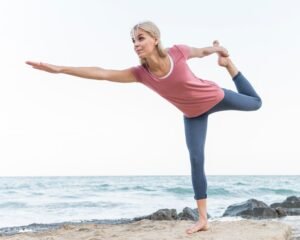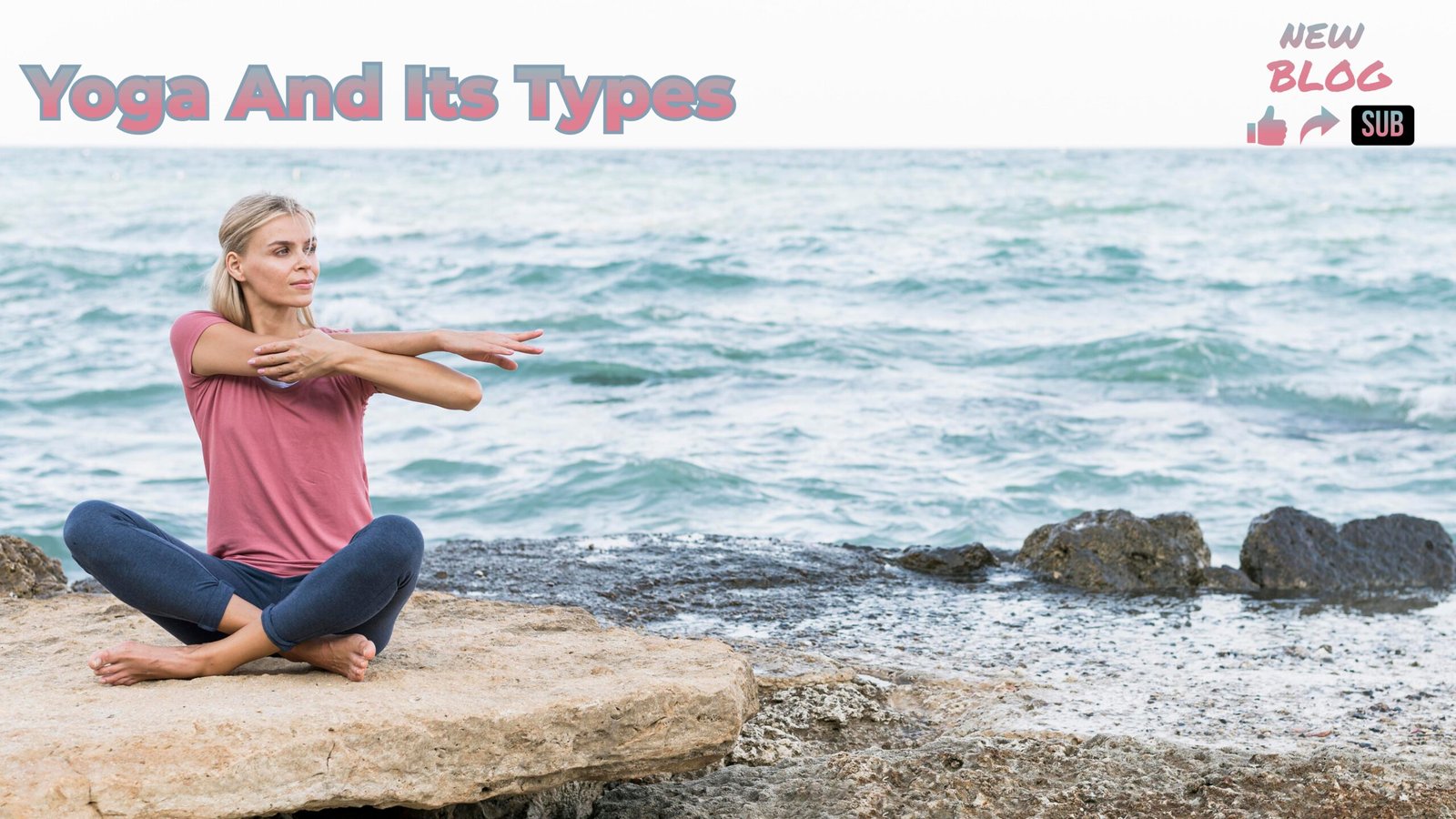Introduction to Yoga
Yoga is a traditional, profound discipline that goes beyond simple physical stretching and breathing exercises. Since its inception over 5,000 years ago in India, yoga has expanded into a comprehensive practice that unites the body, mind, and spirit. The Sanskrit root “yuj,” which means to combine or join, is where the term “yoga” originates. Yoga was traditionally performed as a spiritual path leading to oneness with the divine and self-realization. It is now widely accepted due to its many psychological, emotional, and physical advantages, making it one of the most adaptable and widely accessible types of wellbeing.
Yoga is a way to live and much beyond a workout regimen. It includes a broad range of activities which are meant to foster harmony both inside oneself and with the outside world, such as ethical rules, breathing exercises, meditation, and physical postures. The flexibility of yoga that satisfies personal needs and objectives is what makes it so beautiful. Yoga provides a personalized path for everybody seeking physical health, mental clarity, peace of mind, or spiritual progress.
The Eight Limbs of Yoga
It is necessary to investigate the Eight Limbs of Yoga, as described by the sage Patanjali in the “Yoga Sutras,” if one wants to fully comprehend yoga. These eight limbs provide an exhaustive guide for leading a meaningful life that leads to self-realization.
- Yama: Ethical principles governing one’s behavior towards others, including non-violence, truthfulness, non-stealing , continence, and non-possessiveness.
- Niyama: Personal observances that guide one’s behavior towards oneself, such as purity, contentment, self-discipline, self-study, and surrender to a higher power.
- Asana: The physical postures that are often the most recognized aspect of yoga. Asanas promote physical strength, flexibility, and balance while preparing the body for meditation.
- Pranayama: The regulation of breath, which is vital for controlling the life force within the body. Pranayama techniques help calm the mind and energize the body.
- Pratyahara: The withdrawal of the senses from external distractions, allowing the practitioner to turn inward and cultivate a deeper awareness of the self.
- Dharana: Concentration or focused attention, which is the precursor to meditation. Dharana involves training the mind to concentrate on a single point or object.
- Dhyana: Meditation, a state of uninterrupted flow of concentration. It is through Dhyana that one can experience a profound connection with the self and the universe.
- Samadhi: The ultimate state of union with the divine, where the practitioner transcends the ego and experiences oneness with all of creation.

Types of Yoga
Yoga has diversified into various styles and traditions, each offering unique approaches and benefits. Here are some of the most prominent types of yoga practiced today:
Hatha Yoga
The roots for numerous current yoga styles are found with hatha yoga. In order to prepare the body and mind for meditation, it places a strong emphasis on practicing asanas, or physical postures, and pranayama, or breath control. Hatha yoga is frequently seen as a mild and approachable kind of yoga, making it appropriate for novices. The goal is to achieve balance and harmony inside the body by using controlled breathing and purposeful, conscious movements.
Vinyasa Yoga
The dynamic and moving style of vinyasa yoga, commonly referred to as flow yoga, synchronizes breath with movement. Vinyasa practitioners transition fluidly constantly between poses in a sequence. This yoga style is well-liked by people looking for a physically demanding practice because of its inventive and frequently intense sequences. Vinyasa yoga strengthens the heart, increases flexibility, and sharpens the intellect.
Ashtanga Yoga
Ashtanga Yoga is a rigorous and disciplined practice that follows a specific sequence of postures, synchronized with breath. Developed by K. Pattabhi Jois, Ashtanga Yoga consists of six series of postures, each progressively more challenging. This style is known for its physically demanding nature and requires dedication and consistency. Ashtanga Yoga is ideal for those who enjoy structure and a physically intense practice, as it builds strength, stamina, and flexibility.
Iyengar Yoga
Iyengar Yoga, developed by B.K.S. Iyengar is characterized by its precise alignment of postures and the use of props such as blocks, straps, and bolsters. This style of yoga emphasizes the importance of performing each posture with meticulous attention to detail, ensuring that the body is aligned correctly to prevent injury and maximize the benefits of the practice. Iyengar Yoga is suitable for individuals of all ages and abilities, including those recovering from injuries or with physical limitations.
Kundalini Yoga
The purpose of Kundalini Yoga, an energetic and spiritual practice, is to awaken the Kundalini, the dormant compass located at the root of the spine. Using a blend of breath control, meditation, chanting, and dynamic campaigns, this method aims to balance and energize the body’s energy centers, or chakras. Kundalini Yoga is well recognized for its potent neurological system benefits as well as its capacity to foster psychological wellness, mental clarity, and spiritual development.
Bikram Yoga
Bikram Choudhury created the Bikram Yoga heat yoga method which consists of 26 practices and two breathing exercises done in a room that is about 105°F (40.6°C) and 40% humid. It’s thought that the heat promotes improved circulation, deeper stretches, and cleansing. Bikram Yoga is an intense physical practice that increases endurance, flexibility, and strength. It might not be appropriate for everyone, especially individuals who are susceptible to heat or have specific medical issues.

Restorative Yoga
The goal of restful yoga is to facilitate profound relaxation and healing through a gentle and soothing practice. In order to release tension and bring the body back to its state of nature of balance, it involves sustaining passive poses for extended periods of time, frequently with the assistance of props. For anyone looking for a mild practice to compliment more strenuous types of fitness, stress alleviation, or recuperation from a wound or sickness, Calm Yoga is perfect. It promotes self-compassion and awareness, which lets the body and mind relax and regenerate.
Yin Yoga
Yin Yoga is a meditative kind of yoga which deals with the body’s deeper connective tissue, including the ligaments, joints, and fascia. Deep stretching and releasing of tension in these parts are made possible by holding the poses for several minutes. Yin yoga is a meditative, calm kind of yoga that promotes the development of awareness, patience, and stillness. It is a great addition to more vigorous styles of yoga and helps with joint mobility, emotional equilibrium, and flexibility.
Power Yoga
Power Yoga is a vigorous and athletic style of yoga that is often considered a Westernized version of Ashtanga Yoga. It emphasizes strength, endurance, and flexibility, making it a popular choice for those looking for a physically challenging workout. Power Yoga classes are typically fast-paced and may vary in sequence, focusing on building core strength, stamina, and balance. This style is suitable for individuals who enjoy intense physical activity and want to combine the benefits of yoga with those of a high-intensity workout.
Conclusion
Anybody can benefit from yoga’s many facets, regardless of age, degree of fitness, or spiritual orientation. Users can choose a practice that speaks to their own needs and objectives thanks to its wide variety of styles and methods. Yoga offers a route to holistic well-being, whether one is pursuing physical health, cerebral clarity, emotional balance, or spiritual development.
Yoga’s inherent beauty resides in its capacity to change and grow, meeting each practitioner where they are and supporting them in their journey towards increased self-awareness, unity, and serenity. Yoga is becoming a more widespread force for good, fostering health, awareness, and togetherness in a world growing more complicated and divided by the day. Yoga allows people to reestablish connections with others, themselves, and the greater universe, leading to a more fulfilling and meaningful life.
